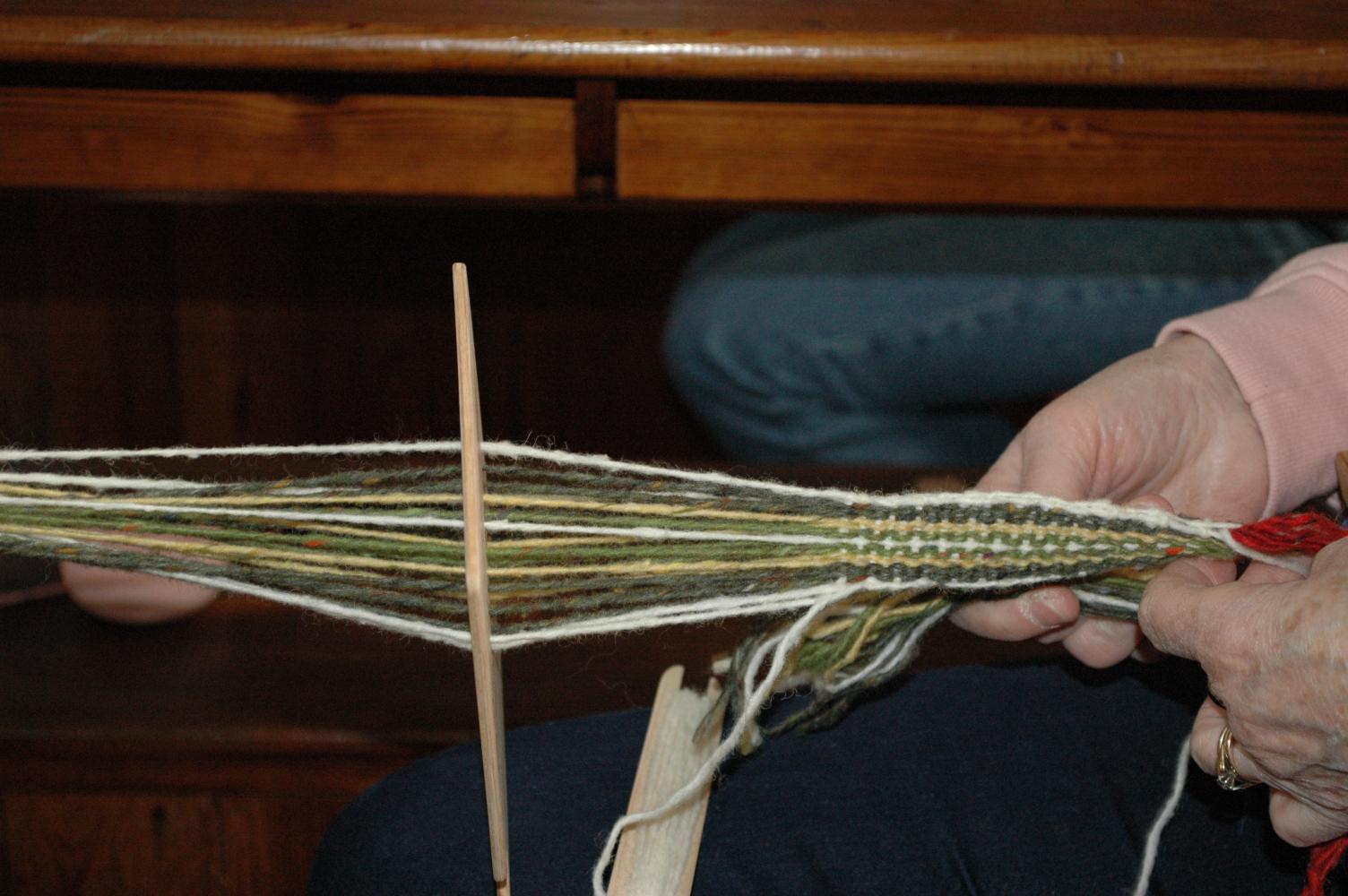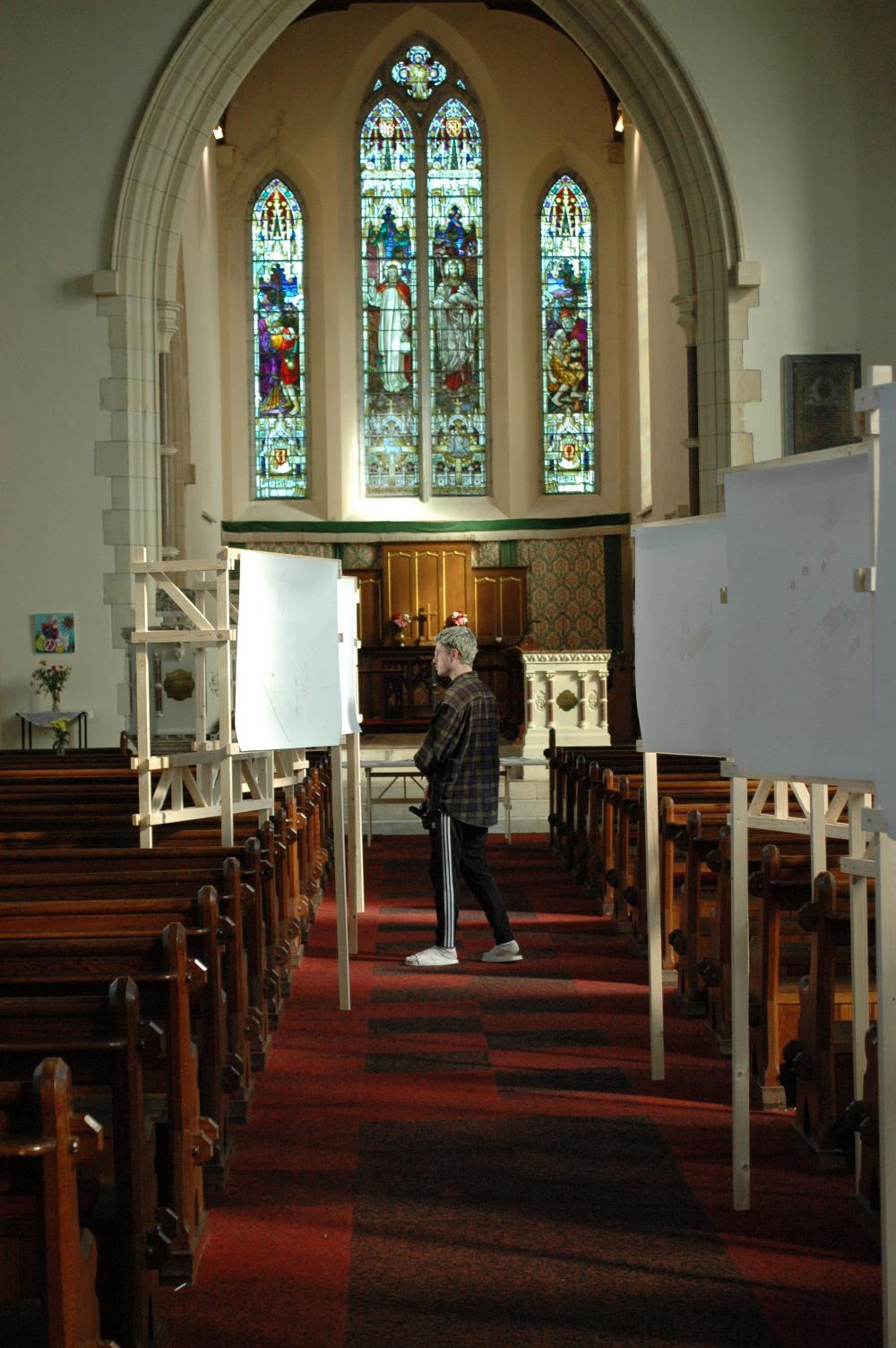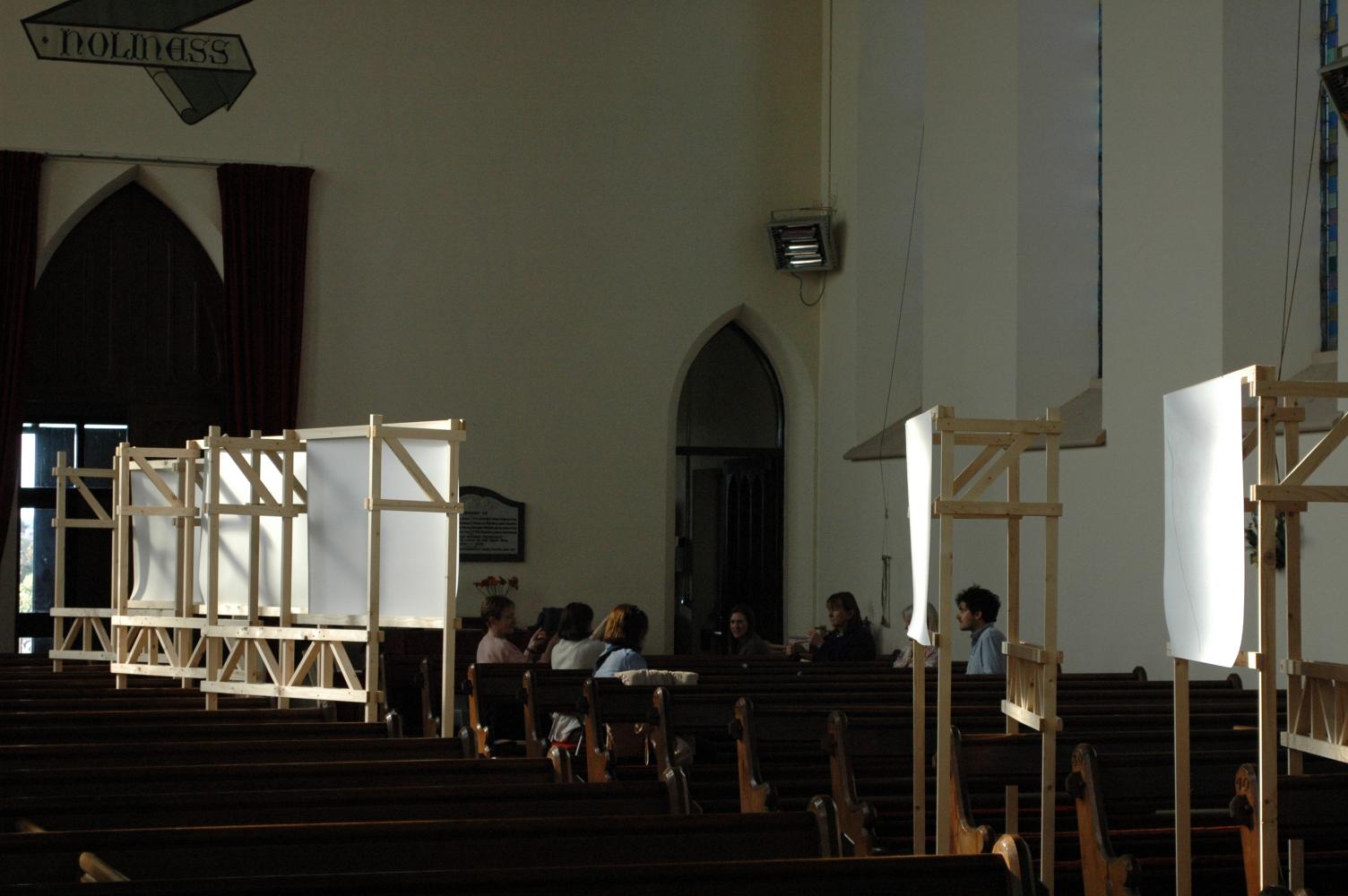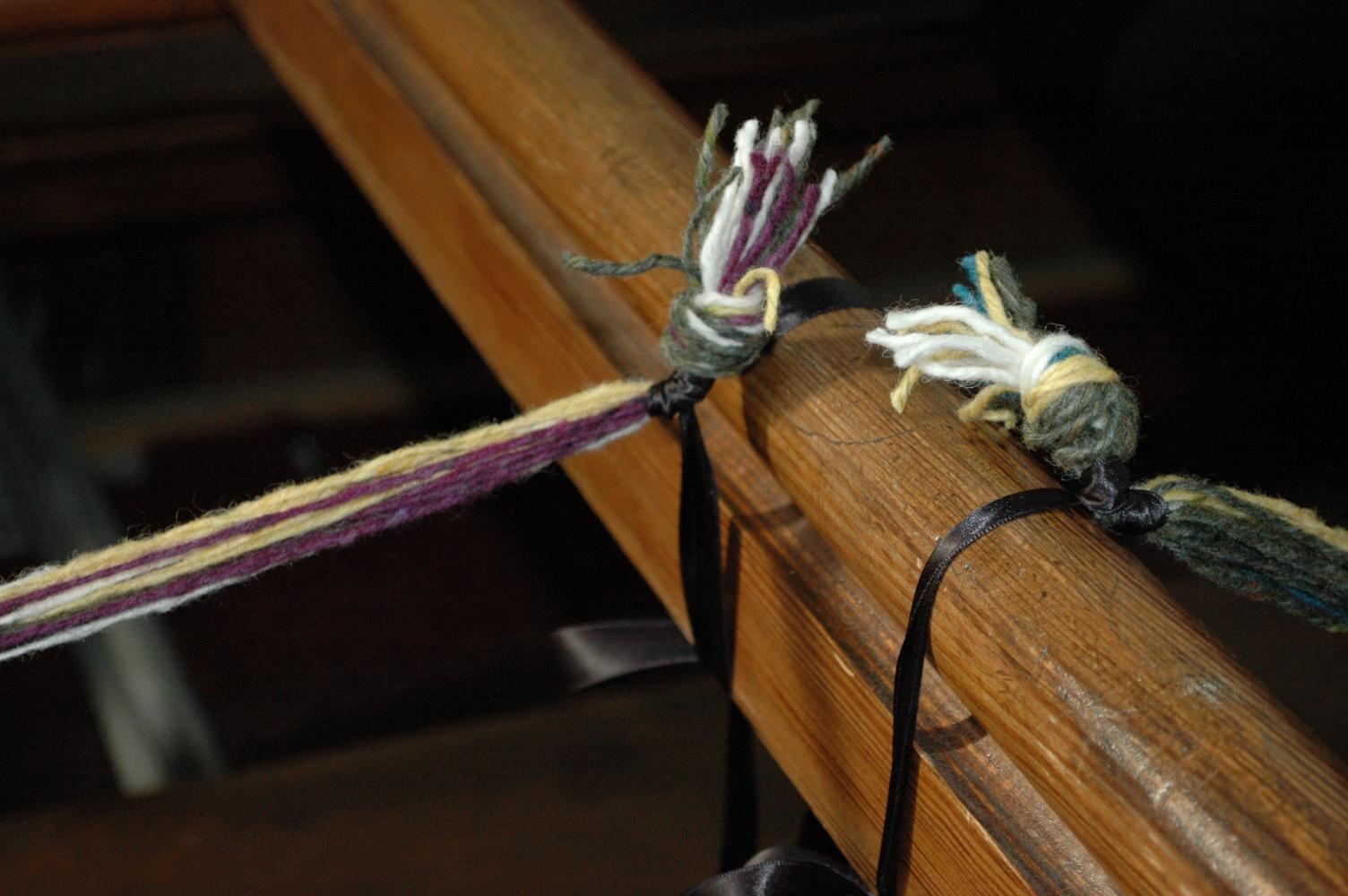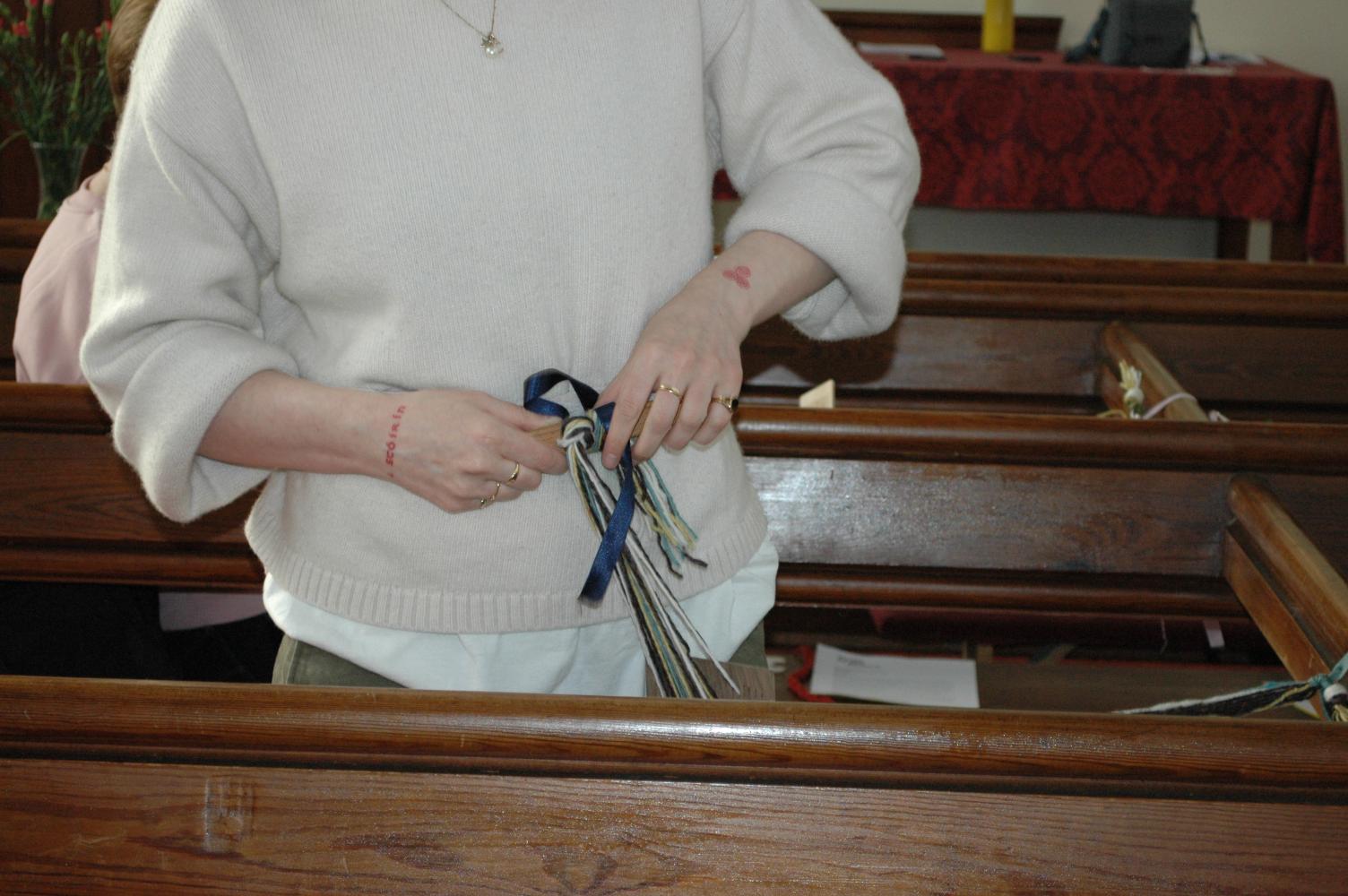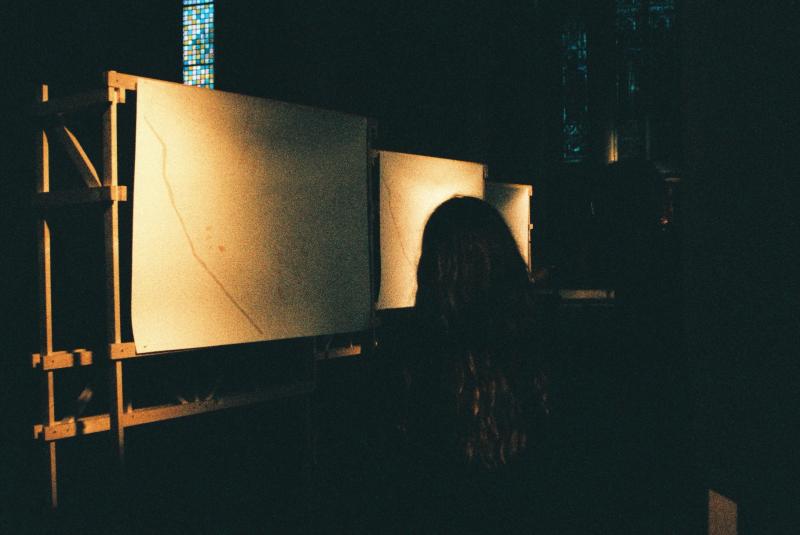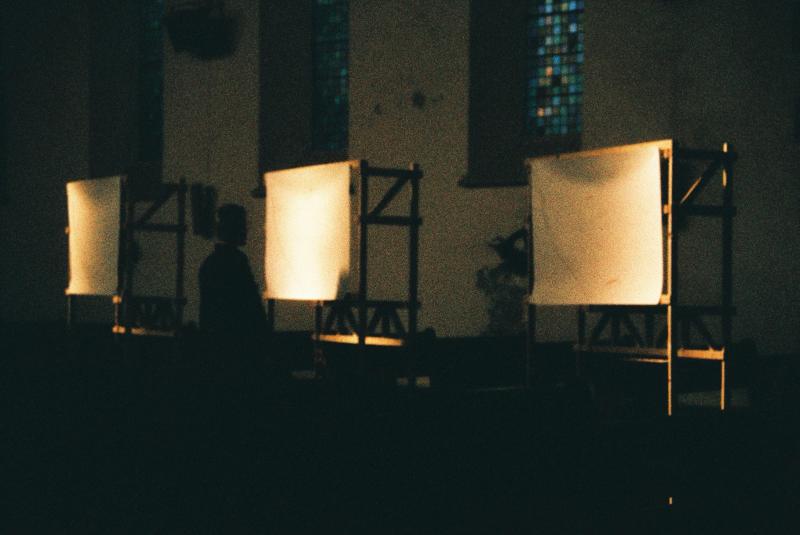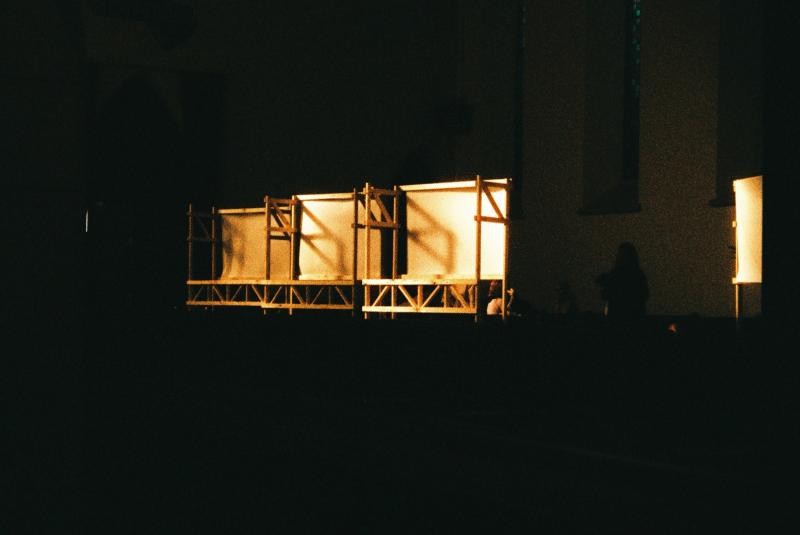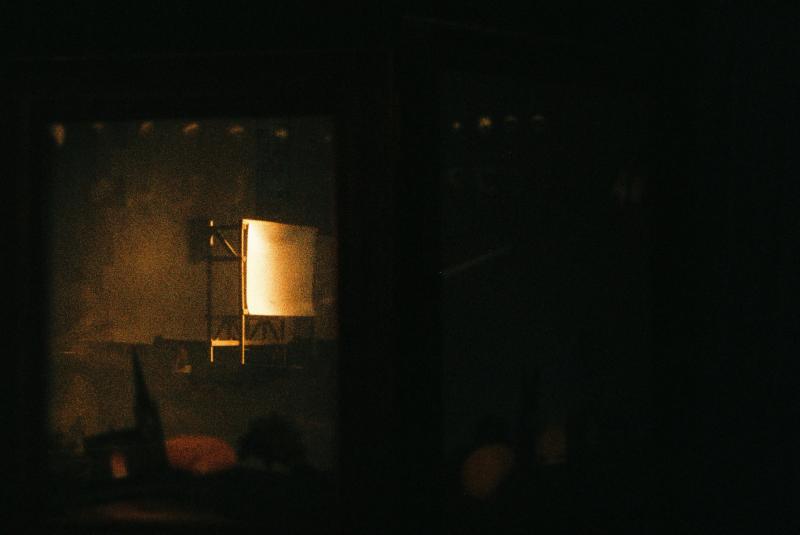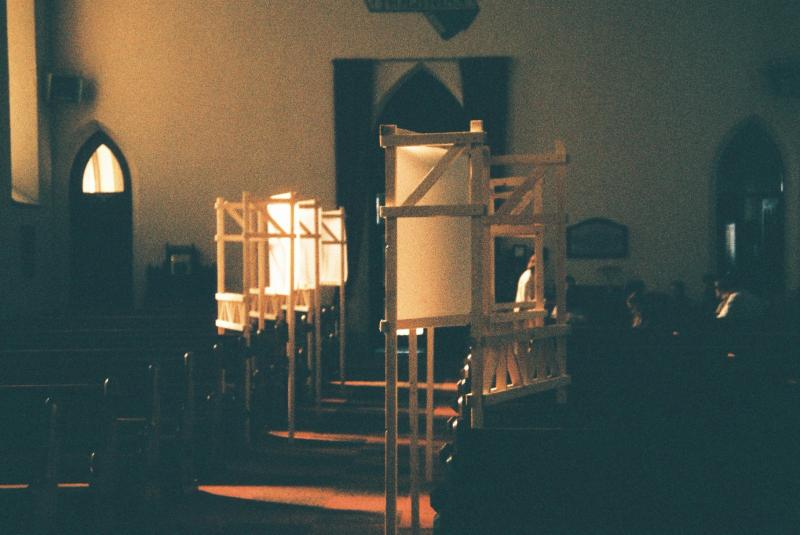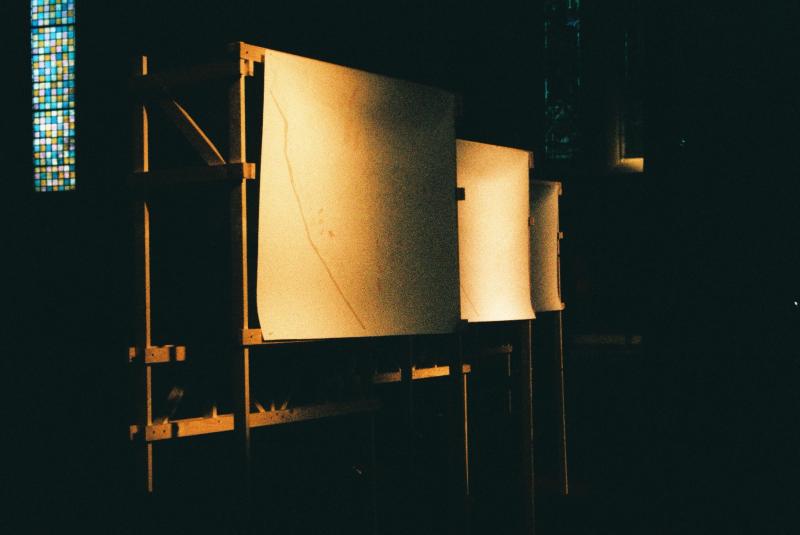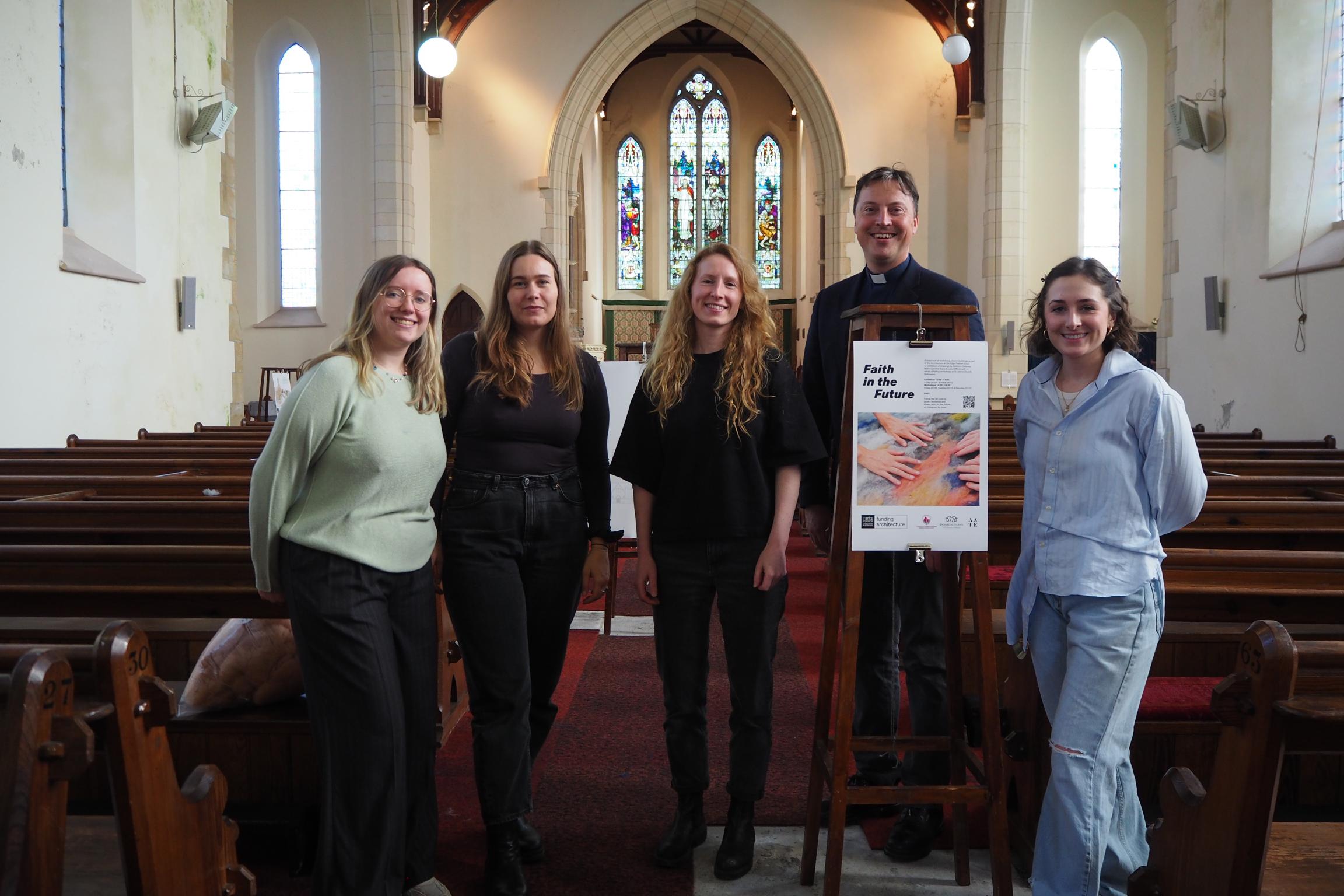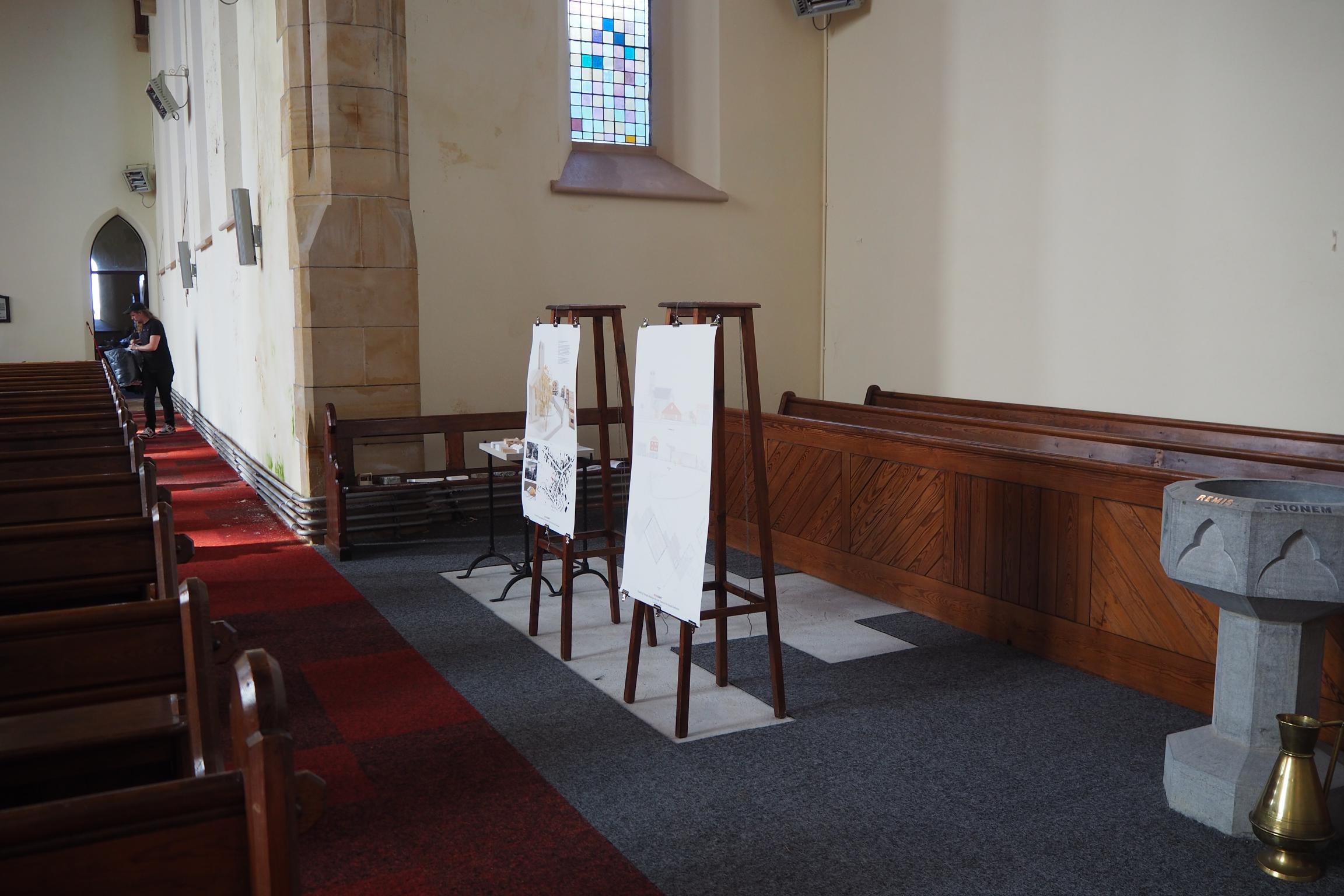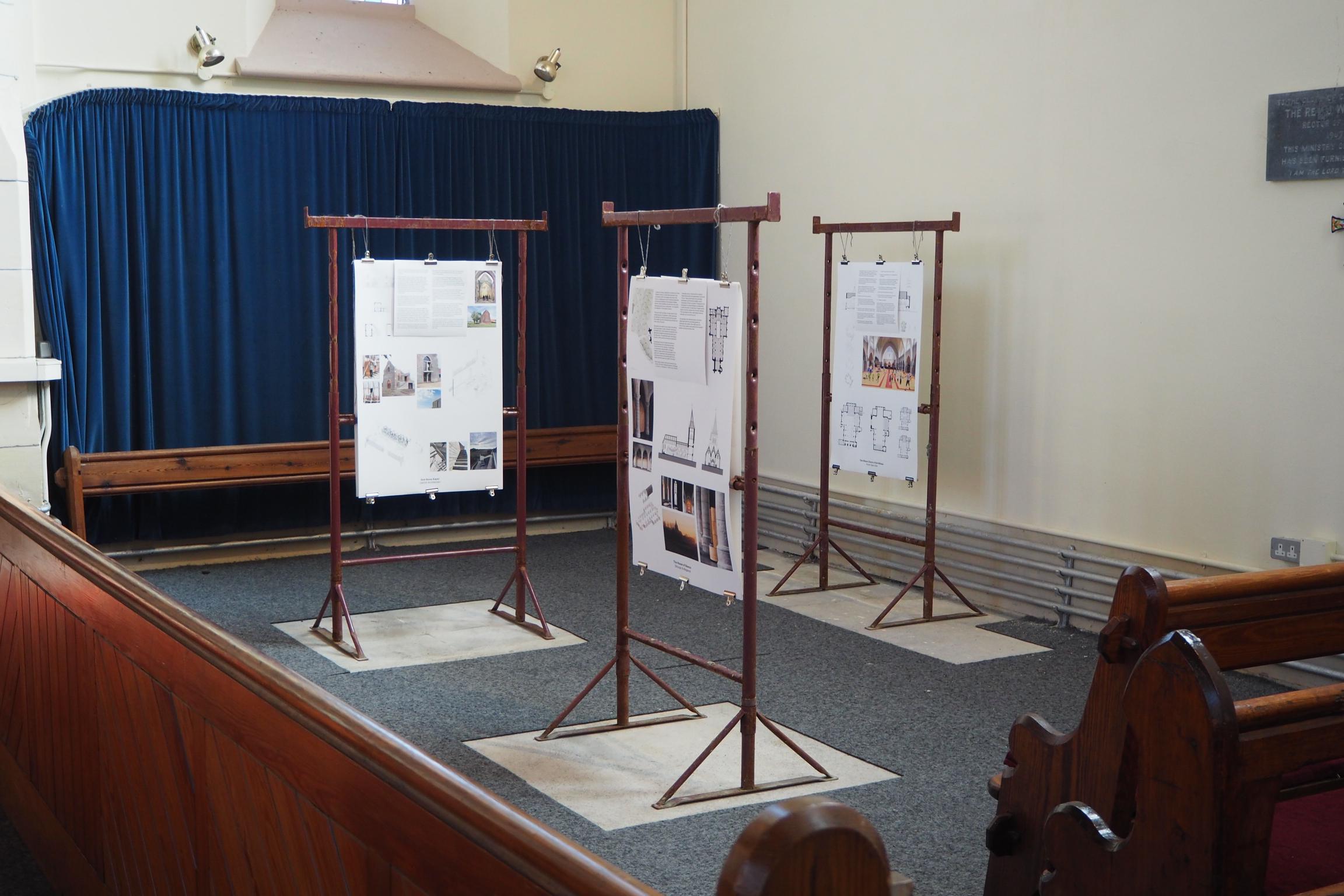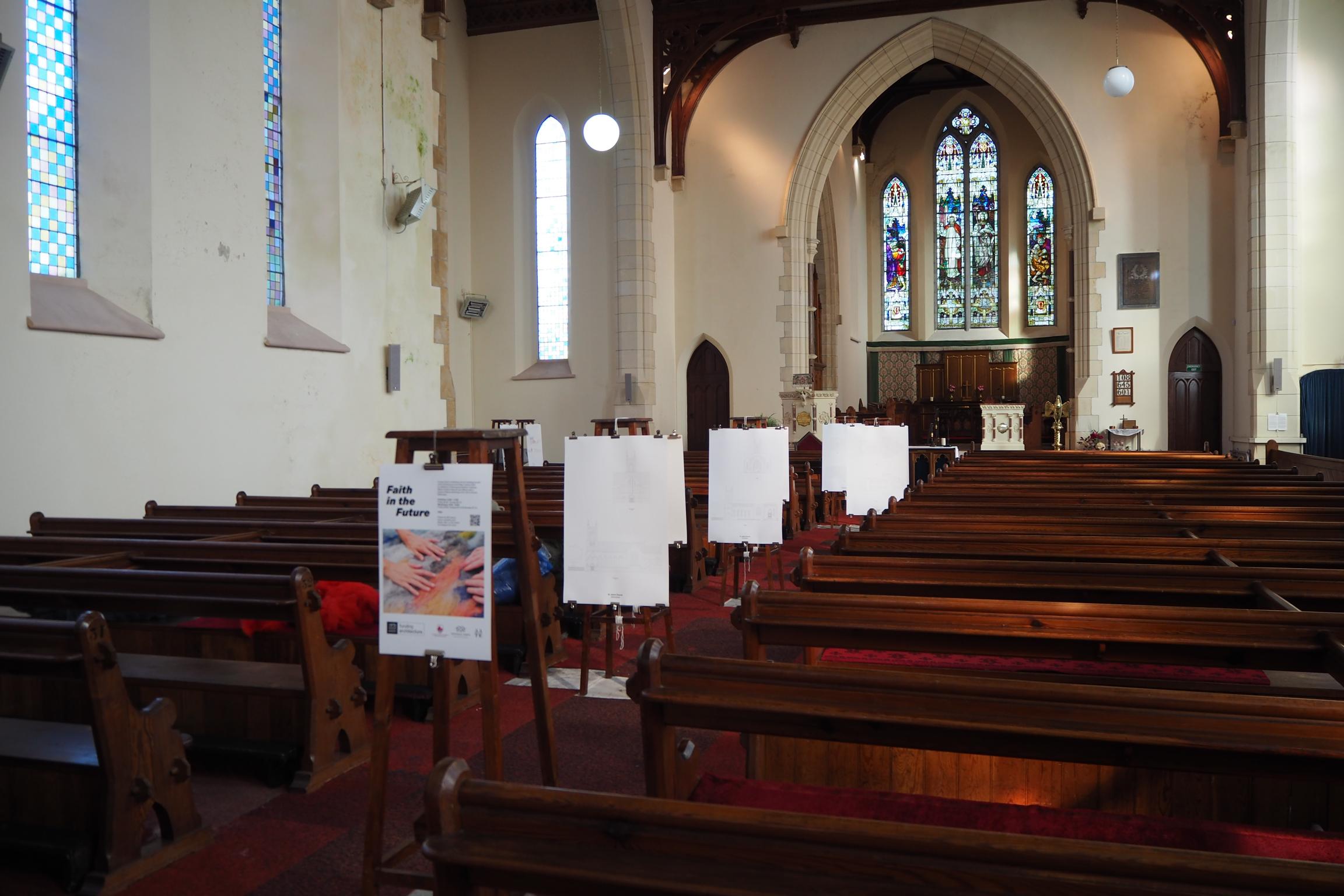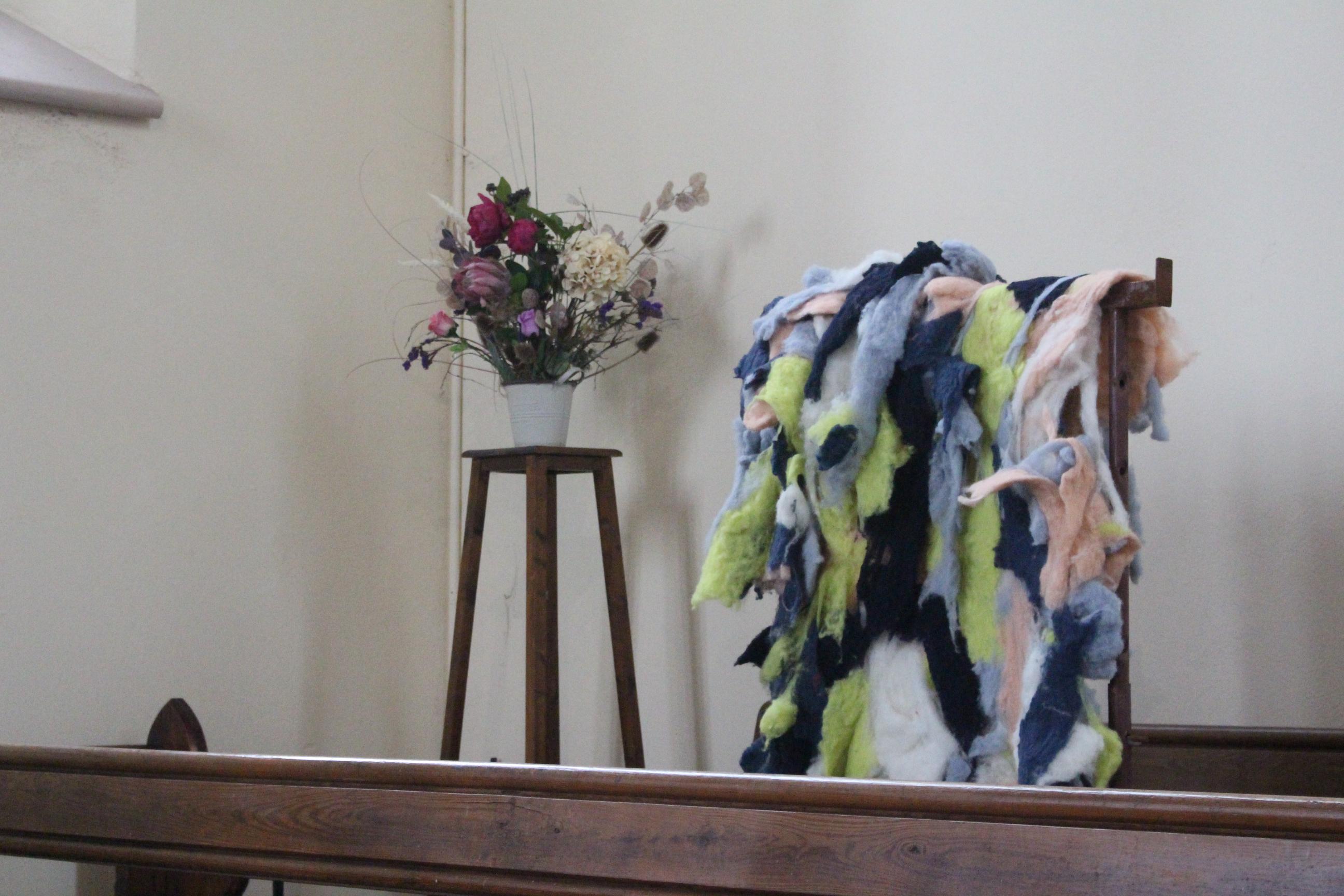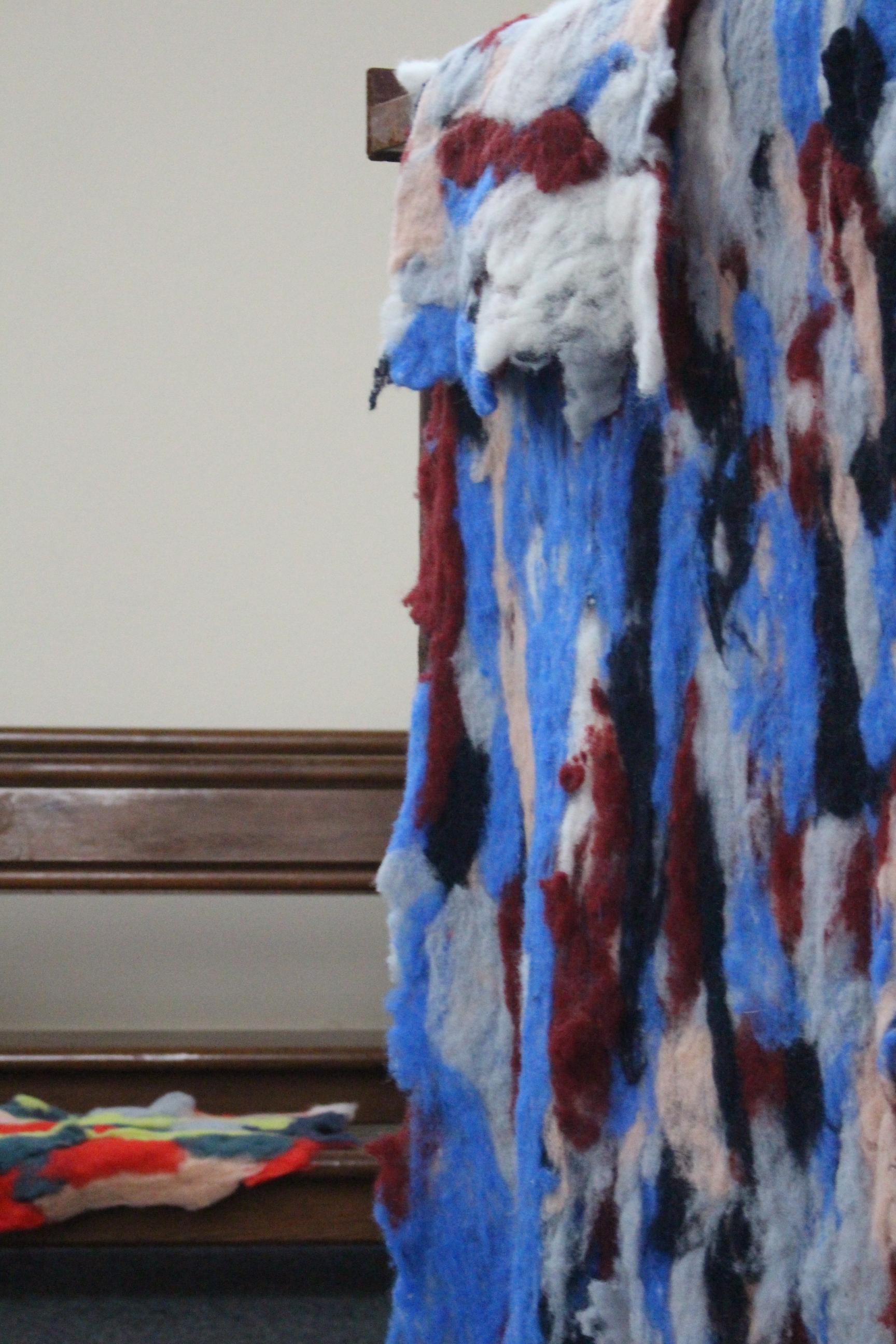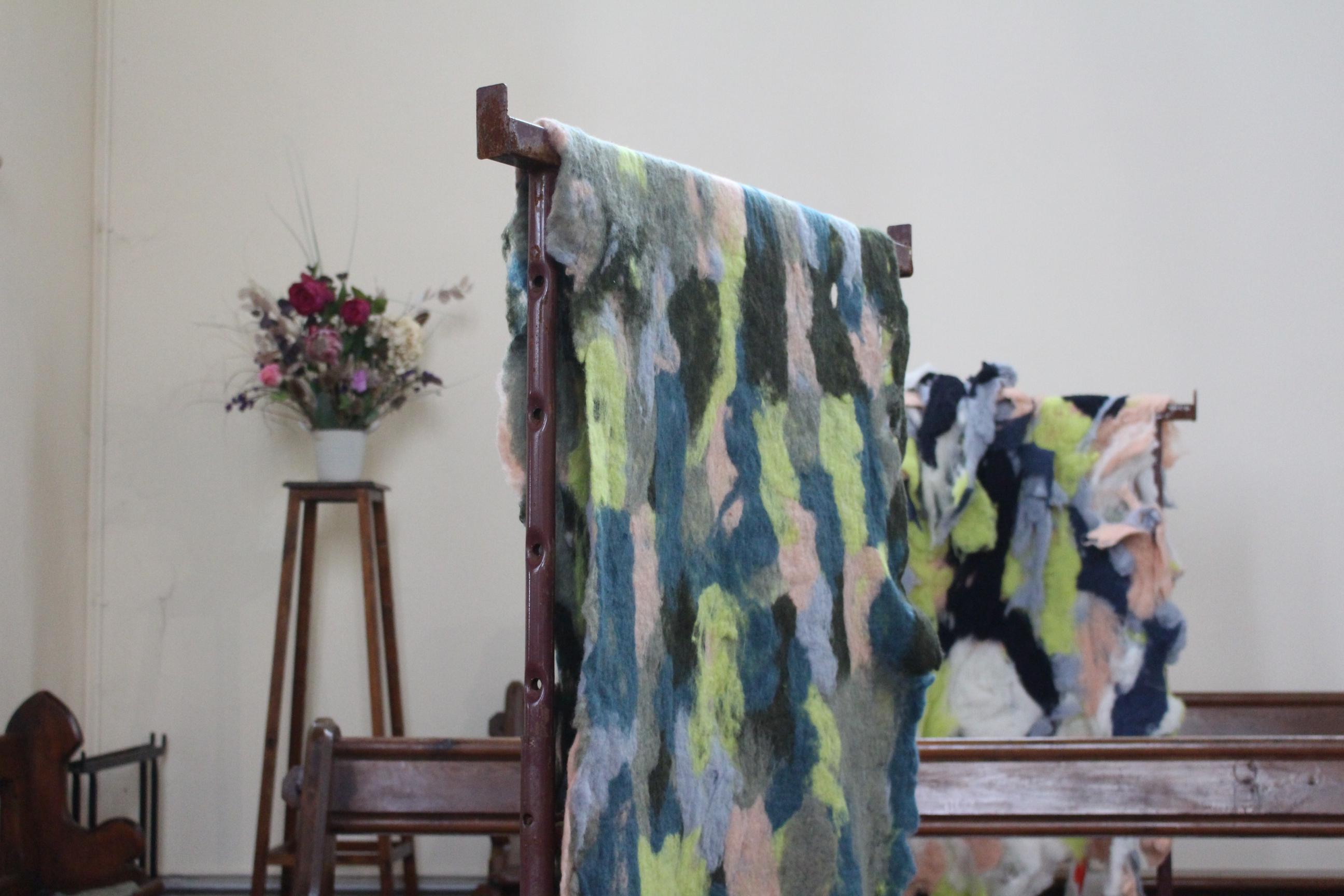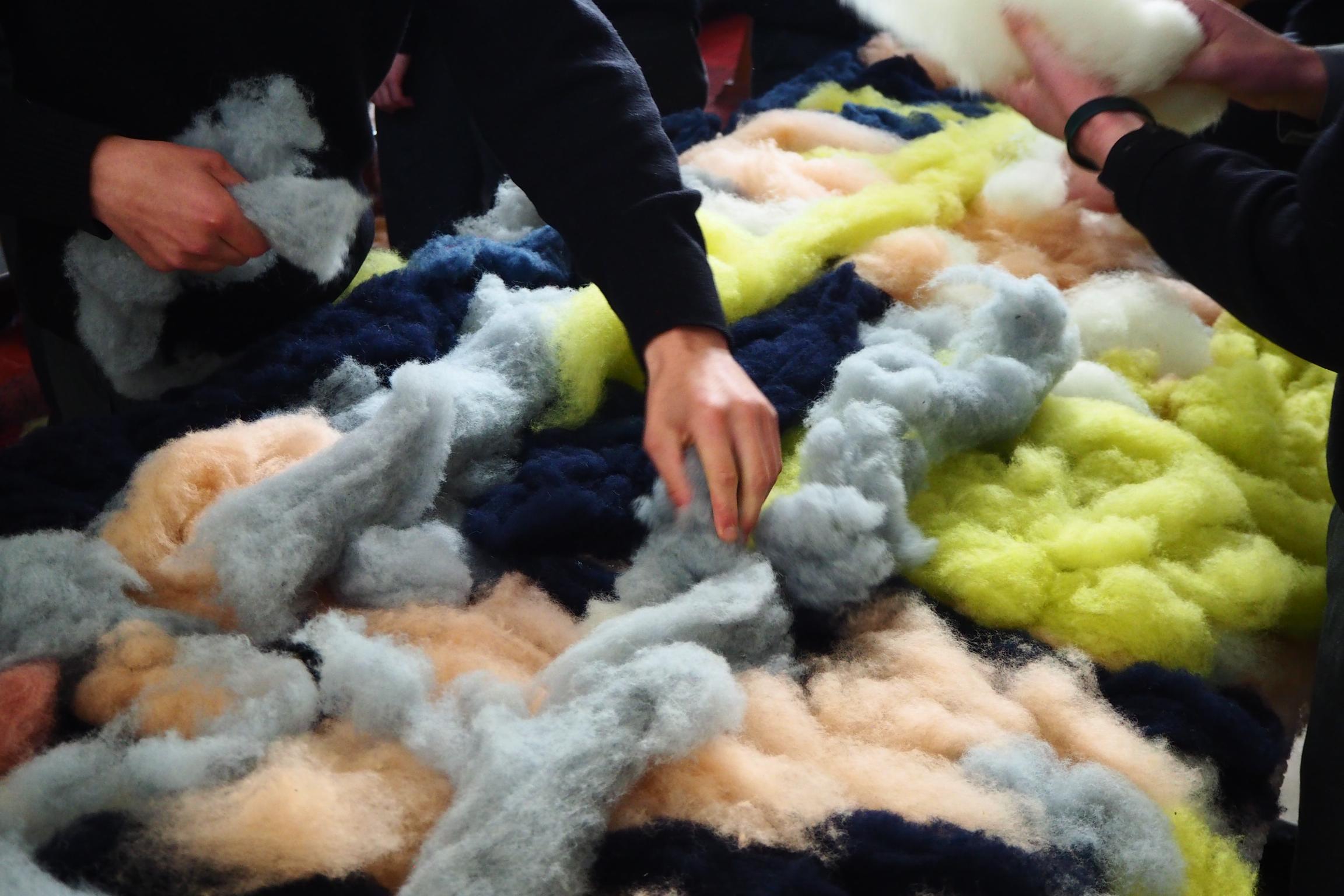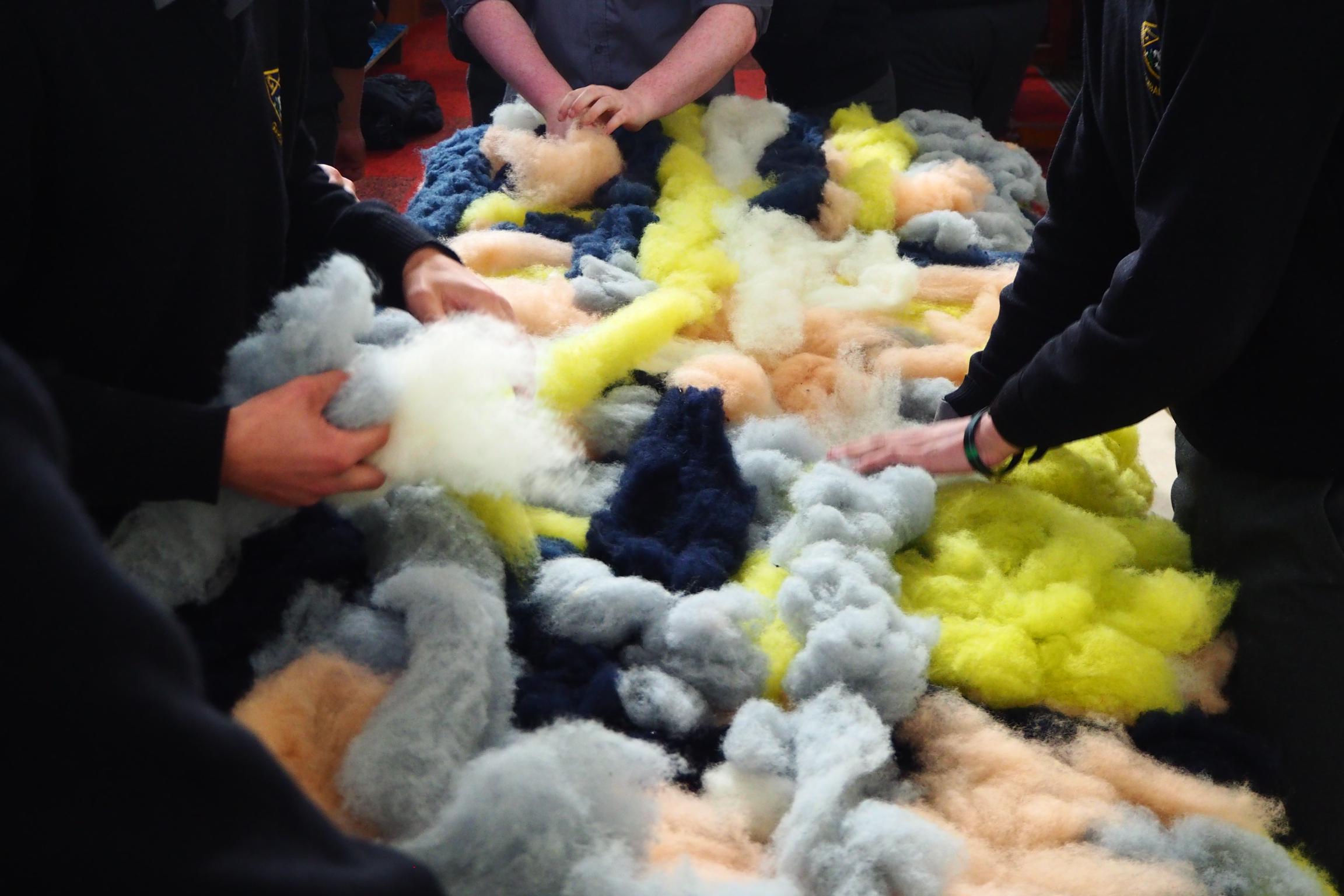Regaining a sense of belonging
Faith in the Future
Weaving Heritage, Sustainability & Community into the Adaptive Reuse of Historic Irish Churches
The project revitalises two historic church sites in East Galway—St. John's Church, Ballinasloe & Aughrim Climate Action Park—through design of timber structures, exhibition, hands-on textile workshops, & community collaboration. Blending architecture, craft, & local knowledge & materials like Irish wool, it fosters dialogue on heritage, climate action, & adaptive reuse. By activating underused spaces, it creates a model for community-driven, sustainable regeneration, bridging past and future.
Ireland
National
It addresses urban-rural linkages
It refers to a physical transformation of the built environment (hard investment)
Yes
2024-10-31
No
No
No
As an individual partnership with other persons/organisation(s)
Faith in the Future is transforming two historic church sites in East Galway—St. John's Church, Ballinasloe, and Holy Trinity Church, Aughrim—into vibrant, sustainable community spaces. Through careful study of the buildings, timber structure designs, and public exhibitions and workshops, the project reconnects local communities with their heritage while promoting environmental awareness.
Workshops on traditional Irish wool crafts, such as wet felting and crios weaving, revive centuries-old skills while supporting sustainability through locally sourced materials. The project follows adaptive reuse principles, proposing three eco-friendly options for each site using low-carbon, bio-based materials of timber and wool. These scenarios host community-focused activities, from educational workshops to cultural exhibitions, ensuring their long-term preservation and enjoyment.
Inspired by successful church repurposing models in Flanders, the project involves local professionals, craft practitioners, students, and community members, fostering intergenerational and international collaboration. Hands-on workshops encourage skill-building, creativity, and sustainability awareness while strengthening social connections and a sense of belonging.
Beyond East Galway, this initiative serves as a scalable model for adaptive reuse, demonstrating how underused church sites can be revitalised for community benefit across Ireland and beyond.
Workshops on traditional Irish wool crafts, such as wet felting and crios weaving, revive centuries-old skills while supporting sustainability through locally sourced materials. The project follows adaptive reuse principles, proposing three eco-friendly options for each site using low-carbon, bio-based materials of timber and wool. These scenarios host community-focused activities, from educational workshops to cultural exhibitions, ensuring their long-term preservation and enjoyment.
Inspired by successful church repurposing models in Flanders, the project involves local professionals, craft practitioners, students, and community members, fostering intergenerational and international collaboration. Hands-on workshops encourage skill-building, creativity, and sustainability awareness while strengthening social connections and a sense of belonging.
Beyond East Galway, this initiative serves as a scalable model for adaptive reuse, demonstrating how underused church sites can be revitalised for community benefit across Ireland and beyond.
Sustainability
Heritage
Community
Adaptive Reuse
Craftsmanship
The core sustainability objectives of the “Faith in the Future” project are to reduce environmental impact, promote circularity, and integrate nature-based solutions into the revitalization of historic spaces. These objectives were met by utilizing low-carbon, bio-based materials like timber and Irish wool, which contribute to the reduction of carbon footprints and promote the reuse of locally sourced materials. Timber, a renewable and biodegradable material, is central to the design of new structures, and Irish wool is used in workshops that emphasize circular design practices. The inclusion of these materials fosters a sustainable connection between the local environment, community, and economy.
By repurposing historic church buildings, the project also minimizes waste and preserves cultural heritage, making a tangible impact on local sustainability goals. Workshops on textile crafts such as wet felting and crios weaving not only revive traditional techniques but also highlight the benefits of material sustainability. The project demonstrates how adaptive reuse can align with the circular economy, offering a replicable model for the sustainable regeneration of similar heritage buildings across Ireland and Europe.
The emphasis on sustainable building materials and circular practices creates an eco-friendly and energy-efficient environment. This project serves as an exemplary model in the context of sustainable regeneration by proving that historic spaces can be modernized while maintaining ecological integrity, reducing waste, and supporting a sustainable future for communities.
By repurposing historic church buildings, the project also minimizes waste and preserves cultural heritage, making a tangible impact on local sustainability goals. Workshops on textile crafts such as wet felting and crios weaving not only revive traditional techniques but also highlight the benefits of material sustainability. The project demonstrates how adaptive reuse can align with the circular economy, offering a replicable model for the sustainable regeneration of similar heritage buildings across Ireland and Europe.
The emphasis on sustainable building materials and circular practices creates an eco-friendly and energy-efficient environment. This project serves as an exemplary model in the context of sustainable regeneration by proving that historic spaces can be modernized while maintaining ecological integrity, reducing waste, and supporting a sustainable future for communities.
The “Faith in the Future” project prioritises aesthetics by creating spaces that respect the cultural history of the region while introducing contemporary sustainable design elements. This balance creates an enriching experience for individuals engaging with these spaces. The use of locally sourced timber and Irish wool is not only environmentally sustainable but also enhances the tactile and visual quality of the space, creating a direct connection to the local landscape and heritage. The architectural interventions—such as timber learning pavilions, exhibition spaces, and community hubs—ensure that the renovated historic churches are transformed into functional and beautiful spaces that serve diverse community needs.
The design process focused on creating a welcoming atmosphere for people of all ages, fostering a sense of belonging and ownership. The project embraces the principles of biophilic design, incorporating natural materials, lighting, and ventilation, which enhances comfort and promotes well-being. The space’s aesthetic qualities, coupled with its functionality, offer visitors a place to learn, create, and connect.
Furthermore, by engaging local communities in the creation of these spaces, through participatory workshops and hands-on involvement, the project fosters deep emotional and cultural connections between the participants and their heritage. The aesthetic qualities and the quality of experience in the revitalised spaces contribute to a renewed sense of identity, pride, and community cohesion, making it an exemplary model for creating beautiful, meaningful, and sustainable spaces for people.
The design process focused on creating a welcoming atmosphere for people of all ages, fostering a sense of belonging and ownership. The project embraces the principles of biophilic design, incorporating natural materials, lighting, and ventilation, which enhances comfort and promotes well-being. The space’s aesthetic qualities, coupled with its functionality, offer visitors a place to learn, create, and connect.
Furthermore, by engaging local communities in the creation of these spaces, through participatory workshops and hands-on involvement, the project fosters deep emotional and cultural connections between the participants and their heritage. The aesthetic qualities and the quality of experience in the revitalised spaces contribute to a renewed sense of identity, pride, and community cohesion, making it an exemplary model for creating beautiful, meaningful, and sustainable spaces for people.
The “Faith in the Future” project is centered around inclusion, with a focus on accessibility, affordability, and participation from all segments of the community. By inviting local residents, artisans, and students to engage in both the physical transformation of these spaces and the creation of new cultural programs, the project encourages collective ownership and fosters a deep sense of community. The workshops and cultural activities are designed to be inclusive and accessible to individuals of all ages and backgrounds, ensuring that both young and elderly generations can participate in the revitalization of their heritage.
The design of the new timber structures and the adaptation of the church buildings are grounded in the principles of universal accessibility. Thoughtful planning ensures that these spaces are welcoming to people with diverse needs, including those with mobility challenges. By providing flexible spaces for education, workshops, exhibitions, and cultural events, the project ensures that the spaces can be utilized by all members of the community, regardless of background or ability.
This project also promotes social inclusion through intergenerational exchanges. By bridging the gap between younger generations, who learn traditional crafts, and older generations, who pass down their knowledge, the project fosters a sense of community solidarity. The inclusive governance model allows community members to have a voice in shaping the spaces and activities, ensuring that the project responds to local needs. This holistic approach to inclusion sets the project apart as an exemplary model for community-driven, inclusive regeneration.
The design of the new timber structures and the adaptation of the church buildings are grounded in the principles of universal accessibility. Thoughtful planning ensures that these spaces are welcoming to people with diverse needs, including those with mobility challenges. By providing flexible spaces for education, workshops, exhibitions, and cultural events, the project ensures that the spaces can be utilized by all members of the community, regardless of background or ability.
This project also promotes social inclusion through intergenerational exchanges. By bridging the gap between younger generations, who learn traditional crafts, and older generations, who pass down their knowledge, the project fosters a sense of community solidarity. The inclusive governance model allows community members to have a voice in shaping the spaces and activities, ensuring that the project responds to local needs. This holistic approach to inclusion sets the project apart as an exemplary model for community-driven, inclusive regeneration.
The citizens of Ballinasloe and Aughrim have been deeply involved in the “Faith in the Future” project from its conception through to implementation. Local communities have played an active role in shaping the design and function of the renovated church spaces. Through consultations, workshops, and participatory design processes, citizens have provided invaluable input on how these spaces should serve their needs. This engagement has helped ensure that the project responds directly to community desires, fostering a greater sense of ownership and connection to the project.
Involvement in the workshops has had a significant impact, allowing participants to learn sustainable crafts, develop new skills, and connect with one another. By actively participating in the physical and cultural transformation of these spaces, citizens have contributed to a collective regeneration effort that strengthens community ties and promotes local identity. This hands-on engagement also empowers individuals to take part in the preservation and adaptation of their local heritage, reinforcing the project’s goals of inclusivity and sustainability.
Through this level of participation, the project has created a ripple effect, with citizens not only benefiting from the immediate changes but also playing a key role in sustaining and evolving the space for future generations. Their involvement has ensured that the spaces are not only physically transformed but are culturally and socially revitalised, creating lasting positive impact on the community.
Involvement in the workshops has had a significant impact, allowing participants to learn sustainable crafts, develop new skills, and connect with one another. By actively participating in the physical and cultural transformation of these spaces, citizens have contributed to a collective regeneration effort that strengthens community ties and promotes local identity. This hands-on engagement also empowers individuals to take part in the preservation and adaptation of their local heritage, reinforcing the project’s goals of inclusivity and sustainability.
Through this level of participation, the project has created a ripple effect, with citizens not only benefiting from the immediate changes but also playing a key role in sustaining and evolving the space for future generations. Their involvement has ensured that the spaces are not only physically transformed but are culturally and socially revitalised, creating lasting positive impact on the community.
Stakeholders at local, regional, and national levels have been integral to the success of the “Faith in the Future” project. Locally, the project worked closely with the communities of Ballinasloe and Aughrim to ensure that their needs and values were reflected in the design and implementation process. Local craftsmen, artisans, and community leaders were involved in the creation of the workshops and exhibition installations, contributing their expertise to ensure the cultural and historical relevance of the project.
At the regional level, Galway County Council has played a key role in supporting the project by providing funding, guidance, and logistical support. Their involvement ensured that the project aligned with local development priorities and the Town Centre First policy. Nationally, the Church of Ireland, and cultural heritage organizations provided expertise on the preservation of the church buildings and their adaptive reuse, ensuring that the historic structures were protected while being brought into modern use.
The engagement of these various stakeholders created a multi-layered approach to the project, ensuring that it was aligned with local, regional, and national priorities. By working collaboratively with a diverse group of stakeholders, the project gained a broader understanding of community needs, cultural heritage, and sustainability goals, adding value at every level of engagement.
At the regional level, Galway County Council has played a key role in supporting the project by providing funding, guidance, and logistical support. Their involvement ensured that the project aligned with local development priorities and the Town Centre First policy. Nationally, the Church of Ireland, and cultural heritage organizations provided expertise on the preservation of the church buildings and their adaptive reuse, ensuring that the historic structures were protected while being brought into modern use.
The engagement of these various stakeholders created a multi-layered approach to the project, ensuring that it was aligned with local, regional, and national priorities. By working collaboratively with a diverse group of stakeholders, the project gained a broader understanding of community needs, cultural heritage, and sustainability goals, adding value at every level of engagement.
The “Faith in the Future” project draws on a variety of disciplines and knowledge fields, including architecture, sustainability, heritage conservation, craft, and community development. Architects and designers were crucial in developing the sustainable architectural interventions, ensuring that the church buildings were adapted to modern needs while respecting their historical integrity. The expertise of heritage professionals and conservationists ensured that the project met rigorous standards for the preservation of historical structures, while also enabling their adaptive reuse for community purposes.
Craft practitioners, including textile artists and woodworkers, played a central role in creating workshops that promote the use of local, sustainable materials. This aspect of the project highlights the importance of preserving traditional Irish crafts while applying modern techniques that prioritize environmental sustainability.
Community development specialists were key in ensuring that the design and implementation of the project aligned with the needs and aspirations of the local communities. These experts facilitated consultations, workshops, and participatory processes that encouraged inclusive and collaborative decision-making.
The interaction of these different fields resulted in a holistic approach that combined cultural heritage, sustainability, and community engagement, producing a project that is not only innovative but deeply rooted in local needs and values. This transdisciplinary collaboration created a more impactful, sustainable, and inclusive solution to rural heritage regeneration.
Craft practitioners, including textile artists and woodworkers, played a central role in creating workshops that promote the use of local, sustainable materials. This aspect of the project highlights the importance of preserving traditional Irish crafts while applying modern techniques that prioritize environmental sustainability.
Community development specialists were key in ensuring that the design and implementation of the project aligned with the needs and aspirations of the local communities. These experts facilitated consultations, workshops, and participatory processes that encouraged inclusive and collaborative decision-making.
The interaction of these different fields resulted in a holistic approach that combined cultural heritage, sustainability, and community engagement, producing a project that is not only innovative but deeply rooted in local needs and values. This transdisciplinary collaboration created a more impactful, sustainable, and inclusive solution to rural heritage regeneration.
The "Faith in the Future" project offers an innovative approach to revitalizing rural heritage through sustainability, cultural preservation, and community-driven regeneration, setting it apart from conventional practices.
A key innovation is the use of local, bio-based materials like timber and Irish wool in both architecture and craft workshops. This promotes circular design and low-carbon solutions, diverging from mainstream projects that rely on carbon-intensive materials. Wool, used in both construction and workshops, revives traditional textile skills while supporting local economies and integrating sustainability into every aspect of the project.
The adaptive reuse of historic church buildings is another innovative feature. While adaptive reuse is common, this project focuses on underutilised rural churches, transforming them into multifunctional community spaces. This counters the mainstream tendency to neglect or demolish such buildings, addressing issues like vacant structures, rural isolation, and the loss of local identity. It brings together community engagement and sustainability, making these historic spaces accessible and relevant in today’s context.
An essential aspect of the project is the integration of craft and architecture. By focusing on traditional Irish crafts such as crios-weaving and wet felting, the project bridges sustainable architectural design with heritage skills. These workshops provide hands-on learning, emphasize circular economy principles, and celebrate local craftsmanship, offering a tangible solution to environmental and social challenges. This craft-centered model contrasts with mainstream urban regeneration projects, which often overlook cultural heritage and community empowerment.
Finally, the participatory design process is groundbreaking. The project actively involves locals, artisans, and students in shaping spaces and activities, ensuring that the revitalization meets the community's needs.
A key innovation is the use of local, bio-based materials like timber and Irish wool in both architecture and craft workshops. This promotes circular design and low-carbon solutions, diverging from mainstream projects that rely on carbon-intensive materials. Wool, used in both construction and workshops, revives traditional textile skills while supporting local economies and integrating sustainability into every aspect of the project.
The adaptive reuse of historic church buildings is another innovative feature. While adaptive reuse is common, this project focuses on underutilised rural churches, transforming them into multifunctional community spaces. This counters the mainstream tendency to neglect or demolish such buildings, addressing issues like vacant structures, rural isolation, and the loss of local identity. It brings together community engagement and sustainability, making these historic spaces accessible and relevant in today’s context.
An essential aspect of the project is the integration of craft and architecture. By focusing on traditional Irish crafts such as crios-weaving and wet felting, the project bridges sustainable architectural design with heritage skills. These workshops provide hands-on learning, emphasize circular economy principles, and celebrate local craftsmanship, offering a tangible solution to environmental and social challenges. This craft-centered model contrasts with mainstream urban regeneration projects, which often overlook cultural heritage and community empowerment.
Finally, the participatory design process is groundbreaking. The project actively involves locals, artisans, and students in shaping spaces and activities, ensuring that the revitalization meets the community's needs.
The "Faith in the Future" project uses a participatory, multi-disciplinary approach that integrates community engagement, sustainability, heritage preservation, and craftsmanship to revitalize two historic church sites in East Galway. The methodology prioritises collaboration with local communities and stakeholders, ensuring that the project reflects local needs and values while addressing broader environmental and social goals.
Participatory design was central to the project’s development. Local residents, artisans, and community leaders were engaged through workshops and public meetings, allowing their input to shape the design of the spaces and activities. This inclusive process fosters a sense of ownership and ensures the project responds to the specific needs of the community.
An interdisciplinary approach brought together architects, heritage specialists, and craft practitioners to design and implement the project. The team worked closely to preserve the churches' historical integrity while introducing sustainable design features. Timber and Irish wool were chosen as key materials due to their eco-friendly qualities, low-carbon impact, and strong connection to local heritage. This choice supports circular economy principles, with wool used both in construction and in craft workshops, providing local artisans with sustainable materials for their work.
The project focuses on adaptive reuse, transforming the underutilised church buildings into vibrant, multi-purpose spaces for the community. This approach respects the buildings' historical value while making them functional for contemporary needs. The integration of sustainable crafting through workshops in textiles and woodworking further supports community engagement and promotes sustainable practices.
Lastly, the methodology incorporates a long-term, sustainable strategy by ensuring that the revitalised spaces remain active and relevant to the community.
Participatory design was central to the project’s development. Local residents, artisans, and community leaders were engaged through workshops and public meetings, allowing their input to shape the design of the spaces and activities. This inclusive process fosters a sense of ownership and ensures the project responds to the specific needs of the community.
An interdisciplinary approach brought together architects, heritage specialists, and craft practitioners to design and implement the project. The team worked closely to preserve the churches' historical integrity while introducing sustainable design features. Timber and Irish wool were chosen as key materials due to their eco-friendly qualities, low-carbon impact, and strong connection to local heritage. This choice supports circular economy principles, with wool used both in construction and in craft workshops, providing local artisans with sustainable materials for their work.
The project focuses on adaptive reuse, transforming the underutilised church buildings into vibrant, multi-purpose spaces for the community. This approach respects the buildings' historical value while making them functional for contemporary needs. The integration of sustainable crafting through workshops in textiles and woodworking further supports community engagement and promotes sustainable practices.
Lastly, the methodology incorporates a long-term, sustainable strategy by ensuring that the revitalised spaces remain active and relevant to the community.
1. Community-Driven Design: Engaging local residents, artisans, and stakeholders early fosters ownership and ensures designs meet community needs. This participatory approach empowers communities to shape their own spaces and can be applied to other regeneration projects.
2. Adaptive Reuse of Heritage Sites: Transforming underutilised historic buildings into community hubs offers a sustainable solution for vacant spaces. This model helps revitalize cultural sites, creating spaces for education, events, and social interaction.
3. Use of Local, Sustainable Materials: Bio-based materials like timber and Irish wool support sustainability while reducing environmental impact. Using locally sourced materials strengthens regional economies and promotes circular practices adaptable to other areas.
4. Craft Workshops & Skill Building: Traditional crafts like wet felting and crios weaving help preserve cultural heritage while teaching sustainable skills. These workshops encourage intergenerational learning and can be replicated in communities where traditional skills are at risk.
5. Sustainable Community Spaces: Historic churches are reimagined as multi-purpose hubs for learning, culture, and social events. This scalable model revitalises rural and urban areas, fostering social cohesion and well-being.
This project provides a framework for community-led heritage regeneration, combining preservation, sustainability, and inclusion. It addresses global challenges like climate change, vacant buildings, rural depopulation, and cultural erosion, offering localised solutions with broad impact.
2. Adaptive Reuse of Heritage Sites: Transforming underutilised historic buildings into community hubs offers a sustainable solution for vacant spaces. This model helps revitalize cultural sites, creating spaces for education, events, and social interaction.
3. Use of Local, Sustainable Materials: Bio-based materials like timber and Irish wool support sustainability while reducing environmental impact. Using locally sourced materials strengthens regional economies and promotes circular practices adaptable to other areas.
4. Craft Workshops & Skill Building: Traditional crafts like wet felting and crios weaving help preserve cultural heritage while teaching sustainable skills. These workshops encourage intergenerational learning and can be replicated in communities where traditional skills are at risk.
5. Sustainable Community Spaces: Historic churches are reimagined as multi-purpose hubs for learning, culture, and social events. This scalable model revitalises rural and urban areas, fostering social cohesion and well-being.
This project provides a framework for community-led heritage regeneration, combining preservation, sustainability, and inclusion. It addresses global challenges like climate change, vacant buildings, rural depopulation, and cultural erosion, offering localised solutions with broad impact.
1.Climate Change & Sustainability: Using bio-based materials like timber & Irish wool, the project champions low-carbon, circular economy practices. Natural insulation and eco-friendly construction reduce environmental impact, offering a replicable model for sustainable building that lessens reliance on carbon-intensive materials.
2. Revitalising Vacant Buildings: Many rural churches & heritage sites stand abandoned due to demographic shifts. This project transforms them into multifunctional community spaces, preserving cultural heritage while preventing wasteful demolition and urban sprawl. This adaptive reuse model can be applied globally to reinvigorate similar underused sites.
3. Combating Rural Depopulation & Social Isolation: By converting historic sites into community hubs, the project fosters education, cultural exchange, and intergenerational connections. Encouraging local participation strengthens social bonds and empowers communities to take charge of their futures—an approach that can support other rural areas facing similar challenges.
4. Preserving Culture & Traditional Skills: Workshops on Irish crafts like crios weaving and wet felting help prevent cultural erosion while promoting sustainable practices. Using locally sourced wool, the project merges traditional craftsmanship with eco-conscious innovation, creating a model for other regions to revive heritage skills and promote sustainable livelihoods.
5. Economic Empowerment & Local Sustainability: By engaging artisans, students, and craft practitioners, the project strengthens local economies and reduces dependence on mass production. Promoting sustainable goods and circular economies fosters long-term growth while tackling global issues like resource depletion and economic inequality.
The project blends sustainability, heritage preservation, social inclusion, and economic resilience. Its adaptable framework provides a roadmap for communities worldwide facing environmental, soc
2. Revitalising Vacant Buildings: Many rural churches & heritage sites stand abandoned due to demographic shifts. This project transforms them into multifunctional community spaces, preserving cultural heritage while preventing wasteful demolition and urban sprawl. This adaptive reuse model can be applied globally to reinvigorate similar underused sites.
3. Combating Rural Depopulation & Social Isolation: By converting historic sites into community hubs, the project fosters education, cultural exchange, and intergenerational connections. Encouraging local participation strengthens social bonds and empowers communities to take charge of their futures—an approach that can support other rural areas facing similar challenges.
4. Preserving Culture & Traditional Skills: Workshops on Irish crafts like crios weaving and wet felting help prevent cultural erosion while promoting sustainable practices. Using locally sourced wool, the project merges traditional craftsmanship with eco-conscious innovation, creating a model for other regions to revive heritage skills and promote sustainable livelihoods.
5. Economic Empowerment & Local Sustainability: By engaging artisans, students, and craft practitioners, the project strengthens local economies and reduces dependence on mass production. Promoting sustainable goods and circular economies fosters long-term growth while tackling global issues like resource depletion and economic inequality.
The project blends sustainability, heritage preservation, social inclusion, and economic resilience. Its adaptable framework provides a roadmap for communities worldwide facing environmental, soc
The outcomes of the project:
- Architectural survey drawings of St. John's Church and the surrounding area, Aughrim Holy Trinity and the Climate Action Park
- Archival material
- Mapping of the two sites,
- 3D digital models
- 10 day exhibition at St. John's Church during Architecture at the Edge 2023 including 3no. wet felting workshops 2023
- Arts Coucil Project Award 2024 for Faith in the Future
- 6 day exhibition at St. John's Church during Architecture at the Edge 2024 including 3no. crios weaving workshops, and 1no. wet felting workshop at the Mick Lally Theatre in Galway
- 3no. proposals for the architectural interventions at St. John's Church in sustainable timber
- 3no. proposals for the architectural interventions at Holy Trinity Church Aughrim Climate Action Park in sustainable timber
- Galway International Arts Festival and Galway Culture Company 'Elevate' Bursary Award 2024 for Faith in the Future
- Architectural survey drawings of St. John's Church and the surrounding area, Aughrim Holy Trinity and the Climate Action Park
- Archival material
- Mapping of the two sites,
- 3D digital models
- 10 day exhibition at St. John's Church during Architecture at the Edge 2023 including 3no. wet felting workshops 2023
- Arts Coucil Project Award 2024 for Faith in the Future
- 6 day exhibition at St. John's Church during Architecture at the Edge 2024 including 3no. crios weaving workshops, and 1no. wet felting workshop at the Mick Lally Theatre in Galway
- 3no. proposals for the architectural interventions at St. John's Church in sustainable timber
- 3no. proposals for the architectural interventions at Holy Trinity Church Aughrim Climate Action Park in sustainable timber
- Galway International Arts Festival and Galway Culture Company 'Elevate' Bursary Award 2024 for Faith in the Future

